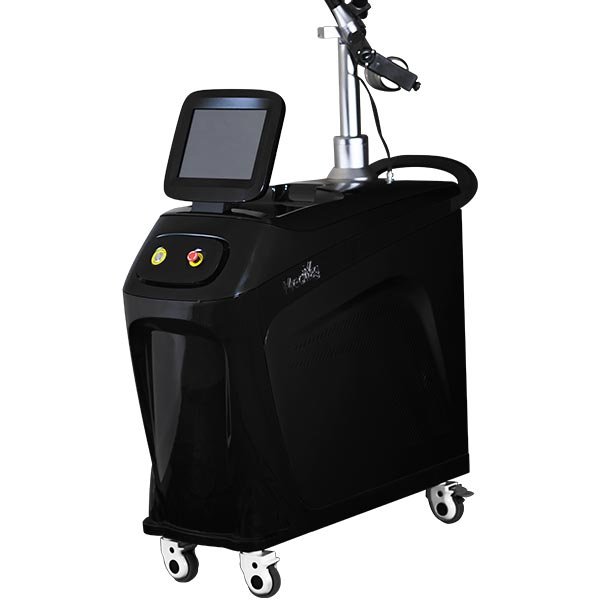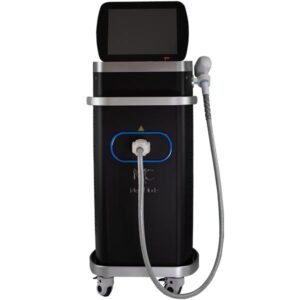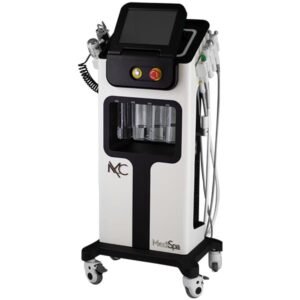Description
Carbon Facial with MediYag
The MediYag is the ideal technology for treating pigmentation on all skin types, as well as tattoo removal and skin rejuvenation. Unlike IPL, this dual wavelength system performs safely and effectively on all skin types.
- Safe removal of pigmentation on all skin types
- Removal of tattoo ink
- Pore Reduction
- Skin Rejuvenation
Benefits
What is a laser?
The acronym ‘LASER’ stands for light amplification by stimulated emission of radiation. A laser works by emitting a wavelength of high energy light, which when focused on a certain skin condition creates heat and destroys diseased cells. Wavelength is measured in nanometres (nm).
Various kinds of lasers are available; they are differentiated by the medium that produces the laser beam. Each of the different types of lasers has a specific range of utility, depending on its wavelength and penetration.
What is neodynium YAG laser?
- Nd:YAG (neodymium-doped yttrium aluminium garnet) is a crystal that is used as a laser medium for solid-state lasers.
- The triply ionised neodymium [Nd(III)] dopant (ie a substance added in minute amounts to another pure substance to alter its conductivity), typically replaces a small fraction of the yttrium ions in the host crystal structure, since the two ions are of similar size.
- The neodymium ion provides the laser activity in the crystal.
- Nd:YAG laser has a wavelength of 1064 nm and has the capability to reach deeper layers of skin tissue than other types of lasers.
- In Q-switched mode, Nd:YAG produces 2 wavelengths, one in the infrared range (1064 nm) and a second beam of 532 nm wavelength which is useful for superficial skin lesions. Q-switching refers to the technique of making the laser produce a high intensity beam in very short pulses
How does neodynium YAG laser work?
Lasers work by emitting a wavelength of high energy light, which when focused on a certain skin condition will create heat and destroy diseased cells.
What is neodynium YAG laser used for?
The following skin disorders can be treated with Nd:YAG laser beams.
Vascular lesions
- Spider and thread veinsin the face (cheek, temporal region, nasal dorsum, forehead) and legs.
- Vascular birthmark (capillary vascular malformation)
- Varicose veins
- Facial veins(telangiectasia)
- Haemangioma(vascular tumour)
The laser light pulses target red pigment(haemoglobin). Typical settings employed for the treatment of facial veins include a 50 milliseconds pulse duration, and fluency (ie output energy) of 150¬250 J/cm2 (measured in Joules per centimeters squared).
Pigmented lesions
- Nd:YAG laser can be used to remove brown age spots (solar lentigines), freckles, naevus of Ota, naevus of Ito, mongolian spots, Hori naevus and café-au-lait-macules.
Light pulses target melanin at variable depth on or in the skin.
Hair removal
- Nd:YAG laser may be used for hair removalin any location including underarms, bikini line, face, neck, back, chest and legs.
- Nd:YAG laser is generally ineffective for light-coloured (blonde/grey) hair, but effective for treating dark (brown/black) hair in patients of Fitzpatrick typesI to III, and perhaps light-coloured type IV skin.
- Extreme caution is recommended in tanned or darker-skinned patients, as the laser can also destroy melanin, resulting in white patches of skin (leukoderma).
The longer-pulse (millisecond) 1064-nm Nd:YAG laser system has been shown to be more effective in safely removing hair than has the Q-switched (nanosecond) Nd:YAG system.
Light pulses target the hair follicle, which causes the hair to fall out and minimises further growth. Typical settings employed include pulse durations of 2 to 20 milliseconds and fluences of 10¬40 J/cm2.
Tatoo removal
- Blue, grey and black tattoos can be removed with a Q-switched Nd:YAG laser (1064 nm wavelength).
- The colour of the tattoo and the depth of the pigment influence the duration and the outcome of the laser treatment.
- Laser treatment involves the selective destruction of ink molecules that are then absorbed by macrophages and eliminated.
Typical settings are pulse duration: 10 nanoseconds, output energy: 300¬500Mj.
Other uses of neodynium YAG laser
Nd:YAG lasers have also be used to improve wrinkles in photo-aged skin.
What does the laser procedure involve?
It is important that the correct diagnosis has been made by the clinician prior to treatment, particularly when pigmented lesions are targeted, to avoid mistreatment of skin cancer such as melanoma.
- The patient must wear eye protection (an opaque covering or goggles) throughout the treatment session.
- Treatment consists of placing a hand piece against the surface of the skin and activating the laser. Many patients describe each pulse feeling like the snapping of a rubber band against the skin.
- Topical anaesthetic may be applied to the area but is not usually necessary.
- Skin surface cooling is applied during all hair removal procedures. Some lasers have built-in cooling devices.
- Immediately following treatment, an ice pack may be applied to soothe the treated area.
- Care should be taken in the first few days following treatment to avoid scrubbing the area, and/or use of abrasive skin cleansers.
- A bandage or patch may help to prevent abrasion of the treated area.
- During the course of treatment patients should protect the area from sun exposureto reduce the risk of postinflammatory pigmentation.
Are there any side effects from neodynium YAG laser treatment?
Side effects from Nd:YAG laser treatment are usually minor and may include:
- Pain during treatment (reduced by contact cooling and if necessary, topical anaesthetic)
- Redness, swelling and itching immediately after the procedure that may last a few days after treatment
- Rarely, skin pigment may absorb too much light energy and blistering can occur (this settles by itself)
- Changes in skin pigmentation. Sometimes the pigment cells (melanocytes) can be damaged, leaving darker (hyperpigmentation) or paler (hypopigmentation) patches of skin. Generally, cosmetic lasers will work better on people with lighter rather than darker skin tones
- Bruising affects up to 10% of patients. It usually fades on its own
- Bacterial infection.
How many laser treatments can I expect?
Vascular lesions
- Treatment time depends on the form, size and location of the lesions as well as the skin type.
- Small red vessels can usually be removed in only 1 to 3 sessions.
- Several sessions may be necessary to remove bigger veins and spider veins.
Hair removal
- In general, patients have 2 to 6 treatments, approximately every 4 to 6 weeks.
- Patients with darker skin types may require more treatments.
Tattoo removal
- The colour of the tattoo and the depth of the pigment influence the duration and the outcome of the laser treatment for tattoo removal.
Multiple sessions (5 to 20 sessions) spaced at least 7 weeks apart may be required to attain favourable results.

















